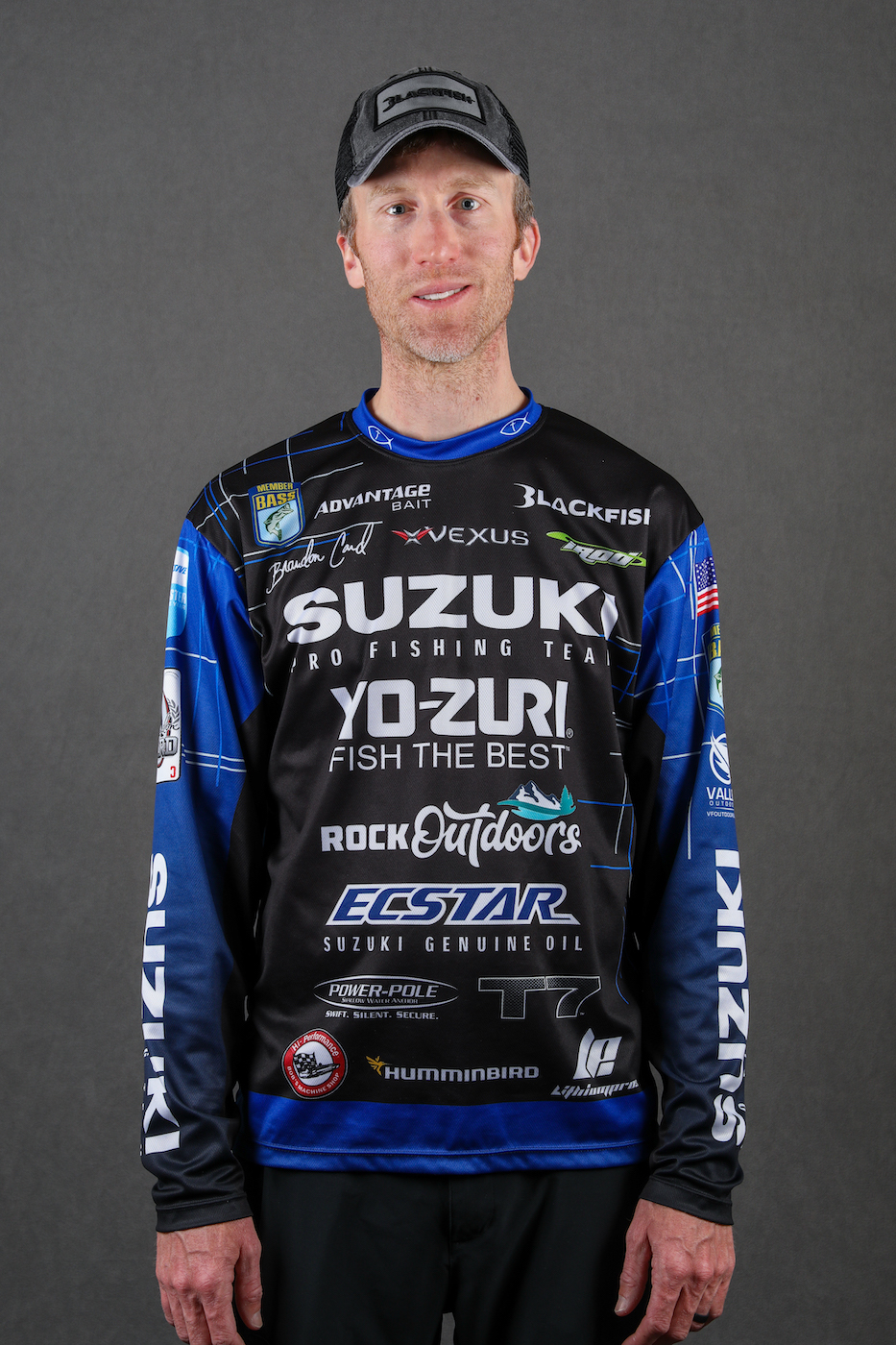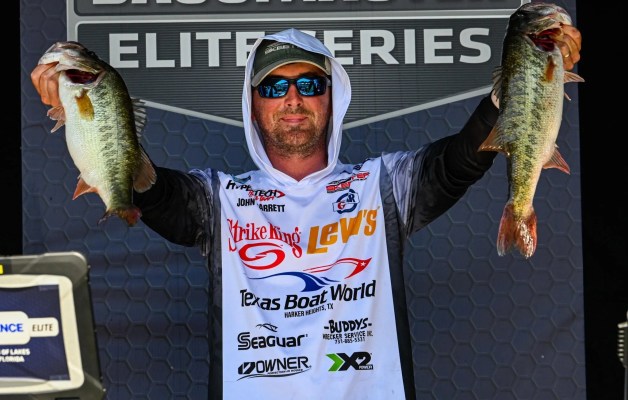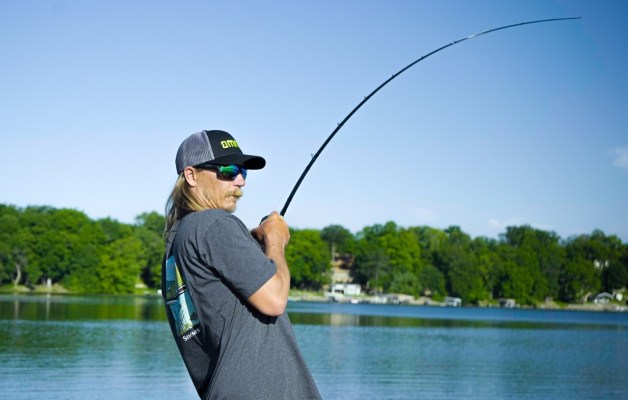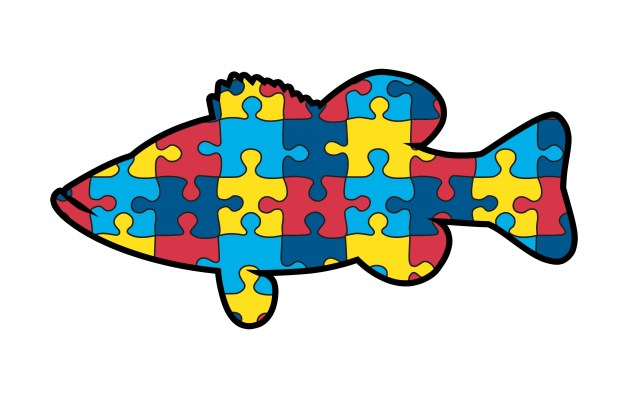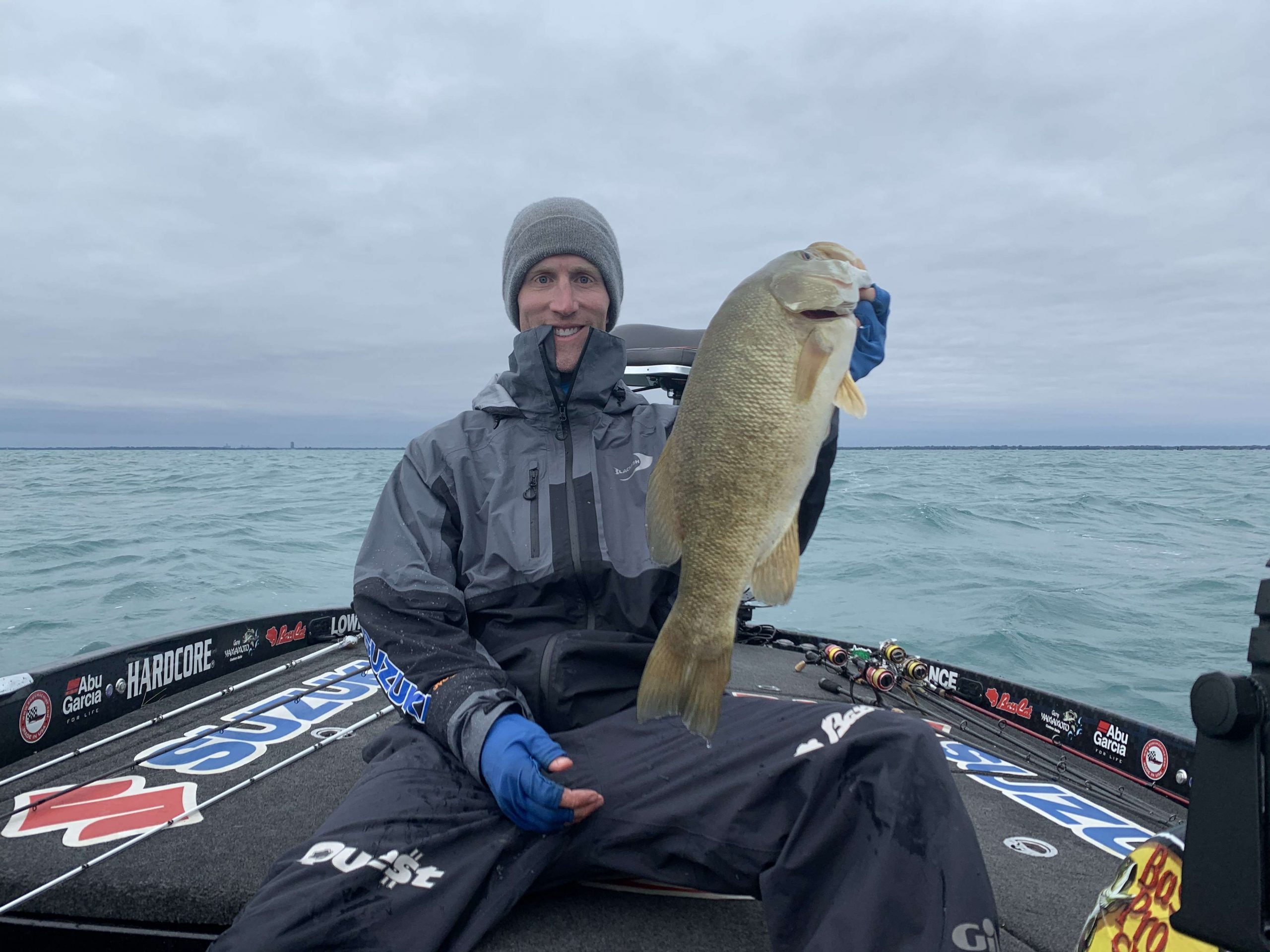
I live in east Tennessee where I’m blessed to be able to fish 12 months a year. The smallmouth fishing can be really good here in wintertime on our highland lakes like Cherokee and Norris.
The smallmouth is the most active species in winter, but things have changed a lot over the past 10 years or so. When I fished for wintertime smallies as a teenager, they would be feeding on crawfish and threadfin shad in 5 to 20 feet of water. One way to pick them off was by casting to rock transitions on the bank. It wasn’t that complicated.
You only needed three or four lures back then. Day in and day out a finesse jig was the most consistent bait. Jerkbaits and crankbaits that mimicked threadfin shad would catch them, too.
Those tactics still work, but not as consistently as they used to. When I fish transition banks these days I throw a 3/8-ounce finesse jig dressed with a 4-inch Yamamoto Double Tail Grub, a Duel Hardcore Minnow Flat SP jerkbait and a Duel Hardcore Shad crankbait.
Somehow, alewives were introduced into these lakes several years ago. They have overtaken threadfin shad as the primary bass forage and have completely changed the way we fish for the smallmouth. It’s kind of like what happened when blueback herring got into lakes in the Carolinas. Wintertime smallmouth now tend to stay much deeper and move with the alewives.
Instead of reading rock transitions on the bank like I used to do, I have to spend a lot of time idling around offshore looking for schools of alewives 20- to 50-feet deep with my Lowrance units. I typically find the bass relating to alewives on flats and gentle tapering points. Alewives, especially on Cherokee, like to hang in depressions on the bottom. These places look like old ponds or sinkholes on Navionics lake charts.
One of my most productive presentations is casting a little 4-inch Yamamoto Single Tail Grub on a 1/2-ounce finesse football jighead. I throw it out there, let it go to the bottom and slow roll it right over the rocks. Natural Shad and Baby Bass are two really good colors for this.
Another effective deal is to vertically fish a jighead dressed with a soft plastic minnow bait. Some people call this the freestyle jig technique. Others call it the Damiki rig. The jig should have a very realistic looking minnow head. I put a Yamamoto Shad Shape Worm on a 3/8-ounce jig and drop it down through the alewives and hover it over the smallmouth I see on my Lowrance units.
It can be a frustrating way to catch them because you’ll see a bass come up to the bait, go back down, come up again and sometimes refuse the jig again. They’re picky because they have so many alewives to munch on.
If you can keep your jig in the right zone long enough, a bass will finally commit to it. When you catch one, the school fires up and you can catch three to five bass in a row. It’s a great technique for a team tournament because when one angler hooks up, there’s a really high chance that the partner will hook up immediately.
I cast the 4-inch grub/football jig with a 7-foot, 6-inch, Abu Garcia Fantasista Premier spinning rod and an Abu Garcia REVO MGX Extreme spinning reel. I fish a freestyle jig/Shad Shape Worm with a 7-foot medium action Fantasista Premier spinning rod and same reel. Both reels are filled with 15-pound Yo-Zuri Superbraid. I add an 8-pound Yo-Zuri Top Knot 100% Fluorocarbon leader for the grub/football jig and a 6-pound leader for freestyle jig fishing.
I used to shy away from the extreme cold days, but I recently got a sponsorship deal from a new apparel company out of Minnesota, Blackfish Gear. One thing those Minnesotans have learned out of necessity is how to stay warm.
Thanks to Blackfish’s fleece-lined Gale Soft-Shell Pullover and Soft-Shell pants I no longer have to put on too many layers of bulky clothing to stay warm in subfreezing temperatures. Now I can get by with two or three layers.
Our lakes are changing all over the country due to the infusion of alewives, blueback herring, gobies and many other factors. You have to keep an open mind and not get caught up in fishing history.
Don’t forget to follow me on Instagram and Facebook.

